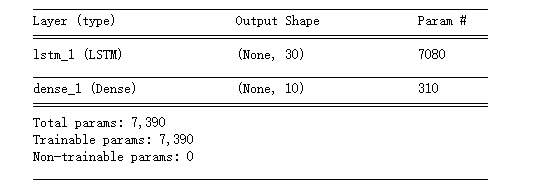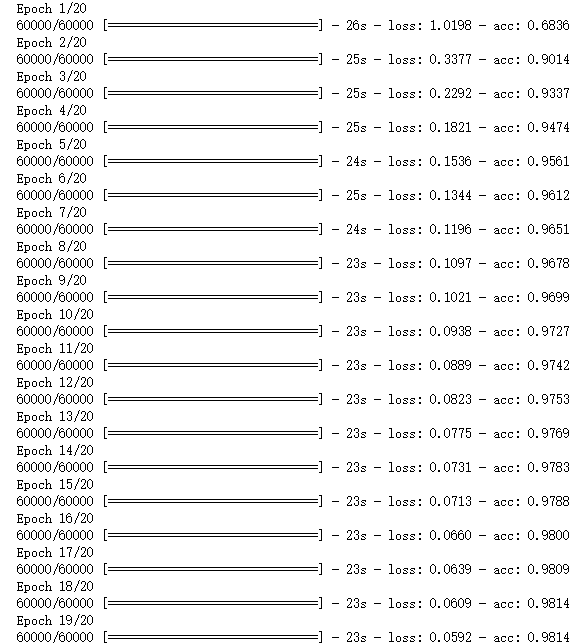Keras实现LSTM
LSTM是优秀的循环神经网络(RNN)结构,而LSTM在结构上也比较复杂,对RNN和LSTM还稍有疑问的朋友可以参考:Recurrent Neural Networks vs LSTM
这里我们将要使用Keras搭建LSTM.Keras封装了一些优秀的深度学习框架的底层实现,使用起来相当简洁,甚至不需要深度学习的理论知识,你都可以轻松快速的搭建你的深度学习网络,强烈推荐给刚入门深度学习的同学使用,当然我也是还没入门的那个。Keras:https://keras.io/,keras的backend有,theano,TensorFlow、CNTk,这里我使用的是TensorFlow。
下面我们就开始搭建LSTM,实现mnist数据的分类。
step 0 加载包和定义参数
mnist的image是28*28的shape,我们定义LSTM的input为(28,),将image一行一行地输入到LSTM的cell中,这样time_step就是28,表示一个image有28行,LSTM的output是30个。
from keras.datasets import mnist from keras.layers import Dense, LSTM from keras.utils import to_categorical from keras.models import Sequential #parameters for LSTM nb_lstm_outputs = 30 #神经元个数 nb_time_steps = 28 #时间序列长度 nb_input_vector = 28 #输入序列
step 1 数据预处理
特别注意label要使用one_hot encoding,x_train的shape(60000, 28,28)
1 #data preprocessing: tofloat32, normalization, one_hot encoding 2 (x_train, y_train), (x_test, y_test) = mnist.load_data() 3 x_train = x_train.astype('float32') 4 x_test = x_test.astype('float32') 5 x_train /= 255 6 x_test /= 255 7 8 y_train = to_categorical(y_train, num_classes=10) 9 y_test = to_categorical(y_test, num_classes=10)
step 2 搭建模型
keras搭建模型相当简单,只需要在Sequential容器中不断add新的layer就可以了。
1 #build model 2 model = Sequential() 3 model.add(LSTM(units=nb_lstm_outputs, input_shape=(nb_time_steps, nb_input_vector))) 4 model.add(Dense(10, activation='softmax'))
step 3 compile
模型compile,指定loss function, optimizer, metrics
1 #compile:loss, optimizer, metrics 2 model.compile(loss='categorical_crossentropy', optimizer='adam', metrics=['accuracy'])
step 4 train
模型训练,需要指定,epochs训练的轮次数,batch_size。
1 #train: epcoch, batch_size 2 model.fit(x_train, y_train, epochs=20, batch_size=128, verbose=1)
step 5 evaluate
可以使用model.summary()来查看你的神经网络的架构和参数量等信息。

1 model.summary() 2 3 score = model.evaluate(x_test, y_test,batch_size=128, verbose=1) 4 print(score)
我的最后结果是:




